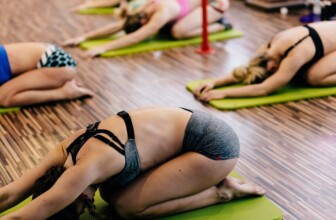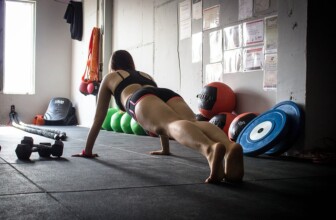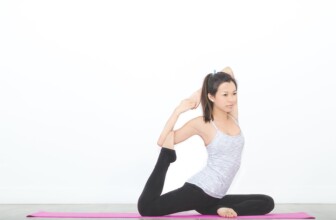Yoga 101: A Comprehensive Guide for Beginners to Find Balance and Serenity
Yoga has transcended its origins as an ancient practice rooted in India and has become a global phenomenon. While it offers numerous physical benefits, such as increased flexibility and strength, it also serves as a pathway to mental and emotional well-being. This comprehensive guide aims to introduce newcomers to the fundamental principles of yoga, practical techniques, and the philosophy behind this timeless practice.
1. Understanding Yoga: An Overview
Yoga is derived from the Sanskrit word “Yuj,” which means “to join” or “to unite.” It embodies the union of body, mind, and spirit. Classical yoga encompasses various paths to achieve self-realization, each emphasizing different aspects of life.
1.1 The Different Styles of Yoga
Yoga comes in many styles, each with its unique emphasis and benefits. Here are some popular types:
- Hatha Yoga: A gentle introduction to basic yoga postures.
- Vinyasa Yoga: A dynamic form of yoga focusing on fluid movement between poses.
- Ashtanga Yoga: A fast-paced style that follows a specific sequence of postures.
- Iyengar Yoga: Focuses on alignment and uses props like belts and blocks.
- Bikram Yoga: A series of 26 poses practiced in a heated room.
- Kundalini Yoga: Incorporates breathwork, chanting, and movement for spiritual awakening.
2. The Physical Benefits of Yoga
Regular yoga practice can lead to numerous physical advantages, including:
- Improved Flexibility: Many postures are designed to stretch muscles and improve range of motion.
- Increased Strength: Holding poses provides resistance training, which can build muscle.
- Better Posture: Alignment principles taught in yoga help correct postural imbalances.
- Enhanced Balance: Balancing poses challenge stability, improving overall coordination.
- Injury Prevention: A strong, flexible body is less prone to injury.
3. The Mental and Emotional Aspects of Yoga
Yoga is more than just a physical discipline; it has profound mental and emotional benefits:
- Stress Reduction: Mindfulness and controlled breathing can lower stress.
- Improved Concentration: Focusing on breath and movement enhances mental clarity.
- Emotional Stability: Regular practice can lead to improved mood and resilience.
4. Getting Started: Basic Techniques for Beginners
Starting your yoga journey can be straightforward. Here are some basic techniques and tips:
4.1 Finding Your Yoga Space
Design a comfortable area for practice, ideally with good ventilation, natural light, and minimal distractions.
4.2 Basic Breathing Techniques
Breathwork, or “Pranayama,” is fundamental in yoga. Begin with Diaphragmatic Breathing:
- Sit in a comfortable position or lie down.
- Inhale deeply through the nose, filling the belly.
- Exhale slowly through the mouth.
4.3 Simple Postures (Asanas)
Here are a few basic poses to start with:
- Mountain Pose
- Downward Dog
- Child’s Pose
4.4 Creating a Routine
Consistency is key. Aim for a short daily practice, gradually increasing duration and complexity as you feel comfortable. A simple 20-30 minute routine can be transformative.
5. Yoga Philosophy: The Eight Limbs of Yoga
The philosophy of yoga is encapsulated in the Eight Limbs, which provide ethical guidelines and practices:
- Yama: Ethical standards and sense of integrity.
- Niyama: Self-discipline and spiritual observances.
- Asana: The physical postures.
- Pranayama: Breath control.
- Pratyahara: Withdrawal of the senses.
- Dharana: Concentration.
- Dhyana: Meditation.
- Samadhi: A state of blissful union with the divine.
6. Real-Life Case Studies: Transformative Experiences
Understanding how yoga has impacted lives can deepen your appreciation and commitment to the practice. Here are two case studies:
6.1 Sarah’s Journey: From Anxiety to Peace
At 28, Sarah was battling anxiety and stress. She enrolled in a local yoga class, initially drawn by the need for mental relief. After a few weeks, the combination of breathing exercises and mindful movements reduced her anxiety levels significantly. Within six months, she transitioned from weekly classes to a daily home practice, which provided continuous emotional grounding.
6.2 Mark’s Transformation: Overcoming Physical Limitations
A former athlete, Mark suffered from chronic back pain after a severe injury. Seeking alternative treatments, he turned to yoga. He began attending restorative classes focusing on gentle stretches and alignment. Over time, he regained strength and flexibility, significantly decreasing his pain levels and improving his quality of life.
7. Common Questions and Answer (Q&A)
Q: How often should I practice yoga?
A: Beginners can start with 2-3 sessions per week, gradually increasing frequency as they become more comfortable with the practice.
Q: Do I need special equipment to practice yoga?
A: While a yoga mat is recommended for grip and comfort, many poses can be practiced on a carpet without any special equipment.
Q: Can yoga help with weight loss?
A: While yoga is not primarily a weight-loss exercise, consistent practice can promote a healthier lifestyle, thereby contributing to weight loss over time.
Q: Is yoga suitable for all ages?
A: Yes! Yoga can be adapted for all ages and physical abilities. There are specialized classes for different age groups and needs.
Q: What should I wear for yoga?
A: Wear comfortable, stretchy clothing that allows for movement. Avoid overly baggy clothes that may hinder your movements.
8. Additional Resources
Below is a table of helpful references and resources related to yoga:
| Source | Description | Link |
|---|---|---|
| Yoga Journal | Comprehensive articles, tutorials, and community support | Yoga Journal |
| DoYogaWithMe | Free online yoga classes for all levels | DoYogaWithMe |
| Yoga Alliance | Accrediting organization for yoga schools, teachers, and institutions | Yoga Alliance |
| Headspace | Mindfulness and meditation app with sections on yoga | Headspace |
| Yoga with Adriene | Popular YouTube channel for a variety of yoga styles and levels | Yoga with Adriene |
Conclusion
Yoga offers a path to finding balance and serenity in our busy lives. By understanding its principles, benefits, and techniques, beginners can embark on a transformative journey. As you establish your practice, remember to approach it with an open mind and heart. Embrace the journey, highlighting progress over perfection.
Future trends in yoga may see increased integration with mental health practices and holistic approaches in everyday wellness. As yoga continues to evolve, practitioners are encouraged to explore various styles and possibly incorporate elements of mindfulness, nutrition, and community support.
Disclaimer
The content of this article is for informational purposes only and is not intended to be a substitute for professional medical advice, diagnosis, or treatment. Always seek the advice of your physician or other qualified health provider with any questions you may have regarding a medical condition or treatment.










